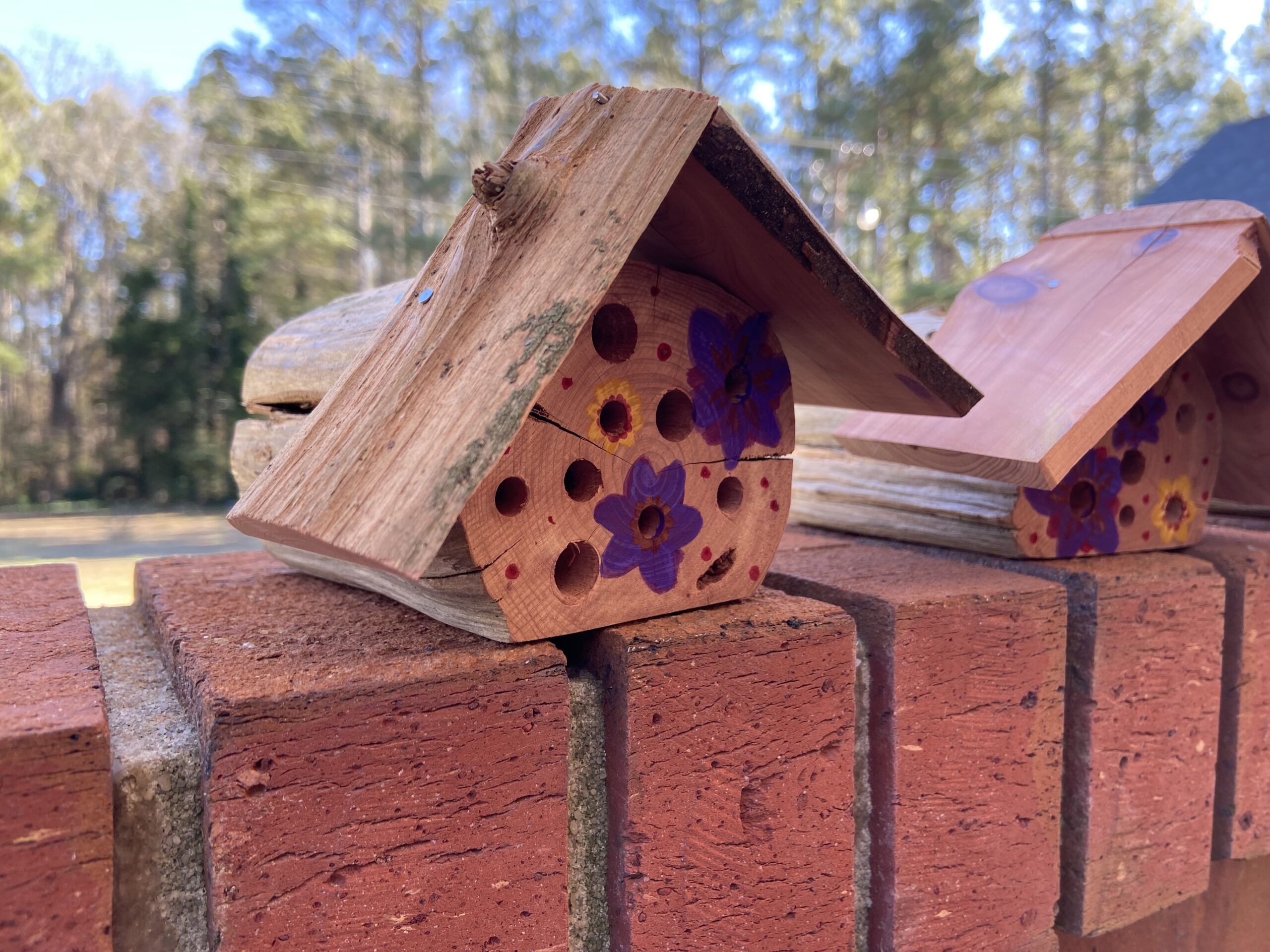How to Make a DIY Solitary Bee House
March 1, 2024 | Molly Sutton
Let’s help pollinators by making bee houses! According to the USDA, “Some scientists estimate that one out of every three bites of food we eat exists because of animal pollinators like bees, butterflies and moths, birds and bats, and beetles and other insects.” Yet, many of these critically important animals are dying off because of habitat loss, underabundance of food, disease, parasites, and environmental factors.
Your school garden can help save these pollinators by creating DIY Bee Houses and planting flowers native to your region.
Solitary bees comprise nearly 98% of the 4,000 known species of bees in the US, according to the University of Minnesota Bee Lab. Some commonly known bees of this nature include carpenter bees and leaf cutter bees. Bee houses help give traveling solitary bees a safe place to sleep and lay their larvae.

Following guidelines from Crown Bees, we made our own solitary bee houses, and so can you!
1. Make the House Frame
Find a fallen cedar or other hardwood branch about the diameter of your hands clasped together. Cut it to about 4 in-10 in long.
Cedar wood contains oils that will naturally repel pests like moths, mosquitos, ticks, flies, and woodworms that would try to take over a bee’s nest. It does not bother bees though, making it an excellent choice for a bee house.
2. Drill Holes
Solitary bees come in all shapes and sizes, so your holes should reflect that! Drill holes of various sizes into the wood about 3 in-8 in deep.
Small holes: 1/8” or 3.18mm
Medium holes: 3/16” or 4.76mm
Large holes: 3/8” or 9.53mm deep
Female solitary bees tend fly away at signs of trouble, rather than defending their homes. Often, their vacant homes will be inhabited by another bee.
Bee houses take advantage of this trait to provide a move-in ready apartment for these bees!
3. Protect bees from disease by adding nesting material.
We recycled paper into straws using a pencil (a chopstick works well too). Simply roll it up and add it to the hole!
Optional Step: add a roof to your bee house to prevent rain from soiling nest holes.
4. Paint bright colors as way markers to help bees find their new home!
Bees see colors yellow to blue best. Scientists say blue-green, blue, and violet are best at attracting bees.
You can still paint your houses with some red accents for you to enjoy! Just know this will not attract the bees.
5. Pick a location and secure your house.
Secure your bee house to a solid object (like a tree or fence) about 5 feet off the ground.
Position the holes facing southeast to receive some morning sun to help the bees warm up in the morning!
Make sure your house is within 300ft of mud and flowers to sustain the bees.
Holes must be disinfected each season to prevent the spread of bee diseases!
The easiest way to do this is add paper inserts to each hole and change them each season.
Ready to learn more about solitary bees?
Let your students “Think like a bee” using Florida State University’s Winbee Game.
Compatible with PC, not Mac.




0 Comments